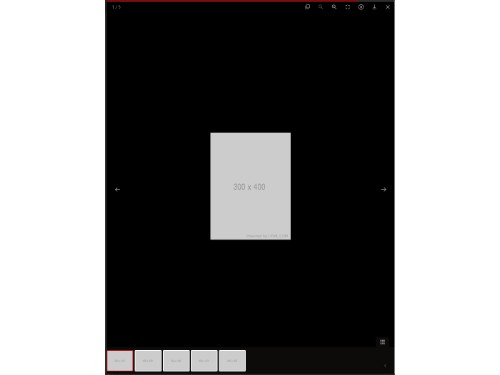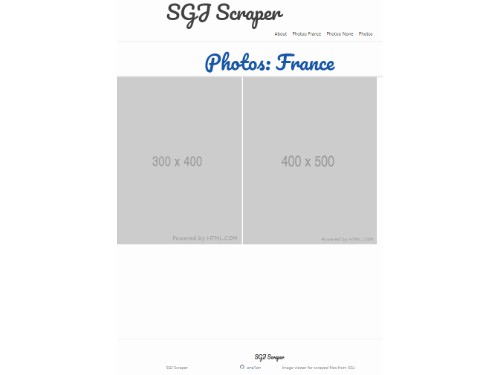Welcome to sgjscraper
The project consists of a scraper written in Java and a viewer for the images.
Setup
Clone the project:
git clone https://github.com/one1on/sgj-scraper
.env
You will find a .env.dist in the repository. Copy this file to .env and fill the SGJ_TOKEN field.
If you run the application with docker do not edit IMG_LOCATION.
# Your SGJ token
SGJ_TOKEN=
# (optional) A location for the downloads. I prefer an encrypted virtual drive
IMG_LOCATION=
# (optional) Set a hashtag to subscribe to. Should be left empty after subscribtion. Subscribtion can be done on SGJ directly too.
HASHTAG_SUBSCRIBE=If you really want to edit IMG_LOCATION to download images to an encrypted virtual drive manual changes in the docker-compose.yml are required.
Usage
There are two ways to run the application
1. gradle + docker viewer + docker docs (development)
This method is used primarily for development. In this setting the scraper is executed on the host while the viewer is started with docker.
Requirements
Scraper:
- JDK1.8
- IDE
Viewer:
- docker
Run the scraper:
gradlew run
Run the viewer. () means optional:
docker-compose up viewer (docs)
viewer: http://docker:8000
(docs: http://docker:8080)
2. dockerized app (primary)
In this setting the scraper is built and executed in docker. The viewer also runs in docker.
Requirements
Scraper:
- docker
Viewer:
- docker
To run the application with docker you have to build the images on your own since I can’t provide them publicly. It’s really easy: First build the images (we can do this in parallel).
docker-compose build --parallel
Make sure to enter a valid token in .env (see .env section).
Then boot the application (first boot takes some time because nothing is cached)
docker-compose up
To shut down the application press CTRL+C.
After a while try to access
viewer: http://<yourdockerip>:8000
docs: http://<yourdockerip>:8080
If you do not want to scrape and just view the images you can start the viewer only.
docker-compose up viewer
Scraper
The scraping process does download all images for
- Notifications for your subscribed hashtags
- Feed entries
The scraped images are grouped by
- Notifications:
hashtag_${hashtag} - Feed entries:
${hashtag}
Examples:
- A Notification for a subscribed hashtag ‘curls’ are grouped in a directory
hashtag_curls - A Feed entry is grouped by the hashtags mentioned in the comments. If someone tagged an image with
#curlsin the comments then the image is stored in the directorycurls.
Viewer
The project contains of a basic gallery viewer based on jekyll (static page generator). The stored images are analysed and a simple website is generated for them. The viewer is available under:
viewer: http://<yourdockerip>:8000
Galleries Overview
The scraped images are displayed and grouped by their directories.
In this example there is a directory france with 2 images and a directory none with 3 images.
By clicking on a image you open a slideshow for all images. By clicking on the link you open the view for a single gallery.
Slideshow
The slideshow allows to view all images easily.
Single Gallery
All images of this gallery are listed. By clicking on a image you open a slideshow for the images.


